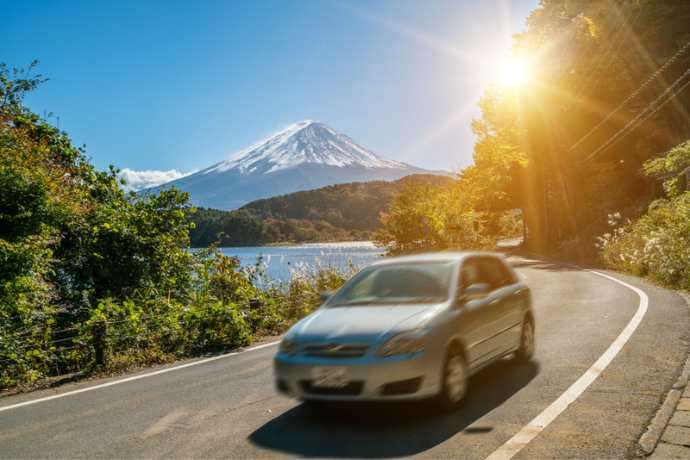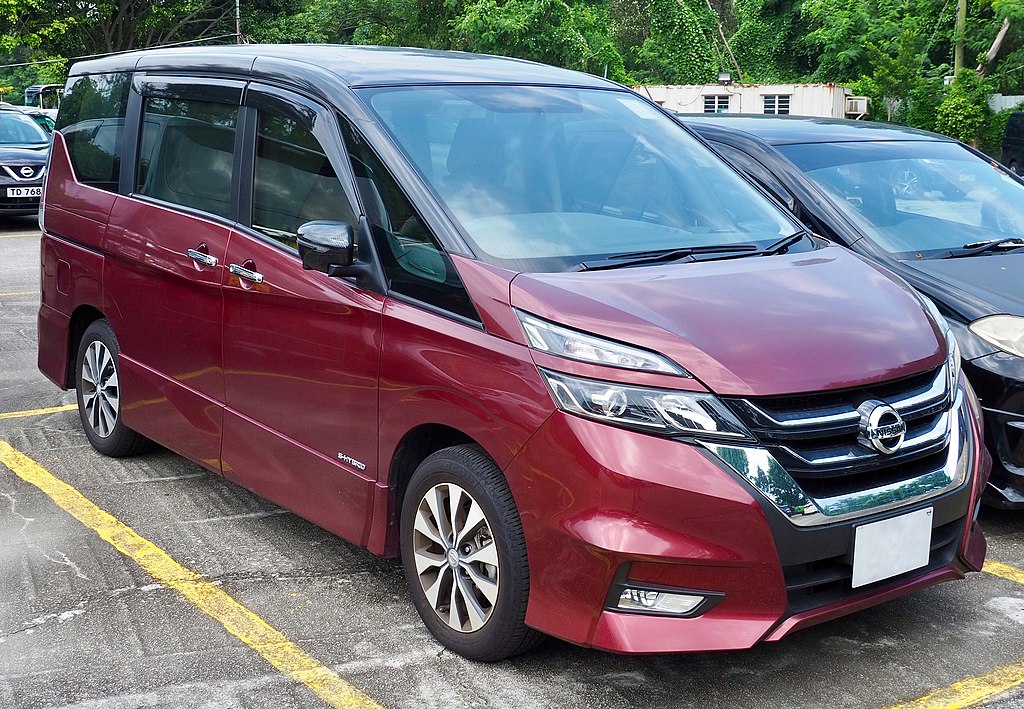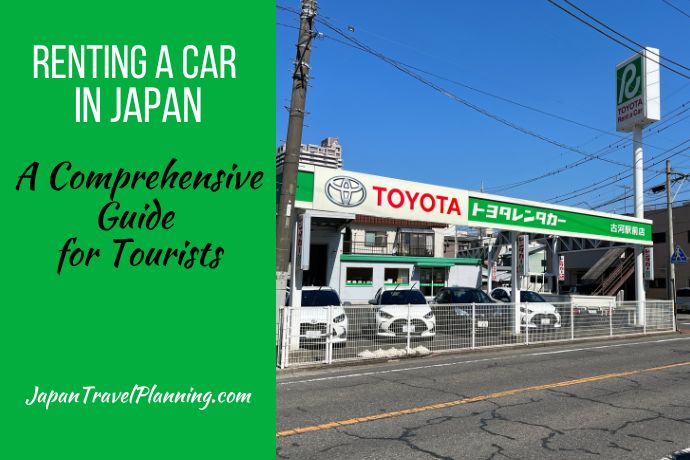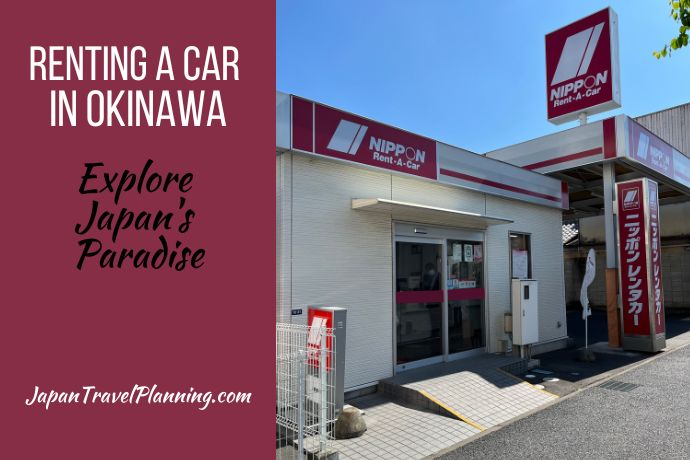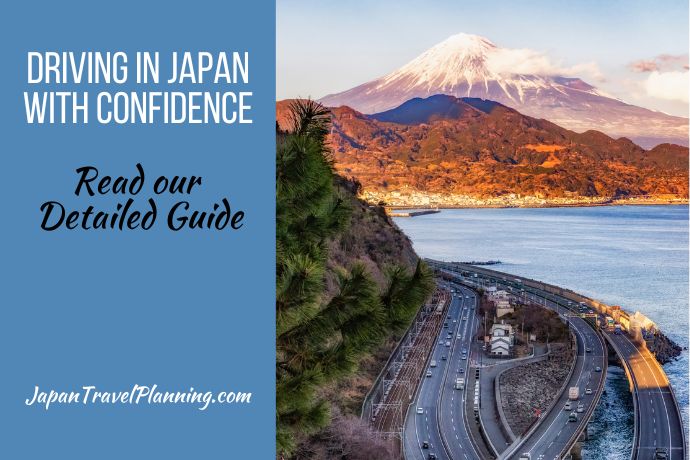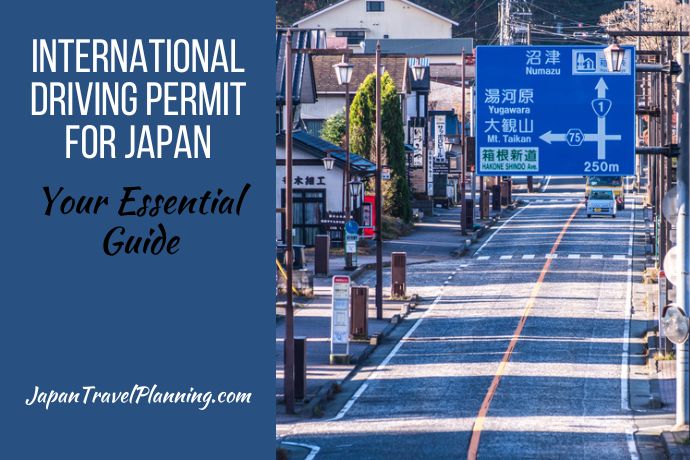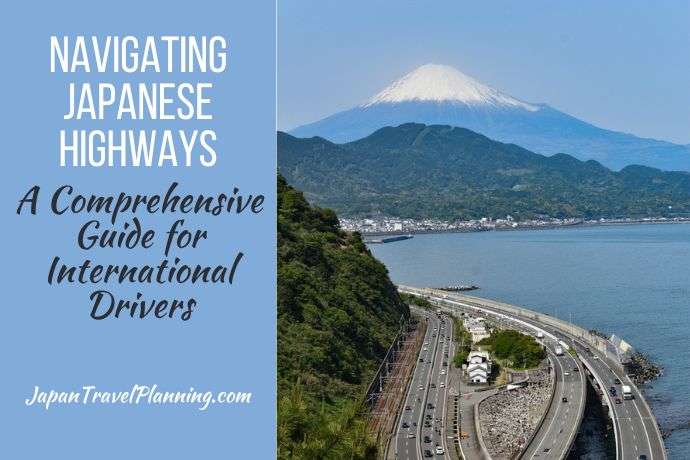Thinking about renting a car in Japan? With so much to explore, a rental car can be your ticket to experiencing Japan’s diverse landscapes at your own pace.
Over the years, I’ve driven in many parts of Japan, from Hokkaido’s vast landscapes to Okinawa’s scenic coastlines, and rented cars from various providers. Renting a car in Japan can seem daunting if you’re unclear on the finer details of how to do it. That’s why I’ve crafted this guide—to walk you through every step.
In this article, I’ll demystify the car rental process in Japan, discussing the pros and cons, requirements, vehicle types, and rental rates. I’ll guide you on where to find rental outlets and what to anticipate when collecting your car. Lastly, I’ll tackle ten commonly asked questions to ensure you’re fully prepared for your journey.
Disclaimer: This article contains affiliate links. If you book after clicking on one of these links then we may receive a small commission at no extra cost to you.
- Easy comparison of multiple car rental provider options using ToCoo!
- Use coupon code K49O12 to get your 1,000 yen discount
- ToCoo! is a local Japanese car comparison site that has the most options available
- Clear description of included protection and excess
- Good cancellation options
- Child seats, GPS, electronic toll cards, second driver and more are available as add-ons
Advantages of Renting a Car in Japan
There are many situations where renting a car in Japan could be an excellent choice. It’s a perfect choice in cases such as:
- Accessibility – Some parts of Japan are still under-serviced or not serviced by public transport. Some harder-to-reach places, especially natural attractions in Japan, are more quickly and conveniently reached by car. Examples include parts of the Japanese Alps and Okinawa’s outer islands. A car will also make reaching secluded spots in peak seasons easier, like seeing cherry blossoms in Spring or Autumn foliage.
- Schedule flexibility – If you have a rental car, you’re not limited by train or bus schedules. If you want to catch a sunset view at short notice or take an unexpected detour, it’s easy to do so.
- Potential cost savings for larger groups – Renting a car could be more economical for groups of five or more. Now that JR passes have significantly increased in cost, renting a car has become an even more economical option. There are ways to save additional money, such as purchasing a regional expressway pass with an ETC.
- Cultural experience – Driving in Japan offers a different insight into its culture and lifestyle. For example, you might stumble upon a local festival or market or stop at a Michi-no-Eki (roadside station) that can give you a taste of local produce.
- Fun – Another excellent reason for choosing to drive in Japan is just for the fun of it. There are many picturesque driving routes, such as the Irohozaka Winding Road in Nikko or a coastal drive in Hokkaido. For car enthusiasts, there’s also a wide range of cars to rent, like Ferraris, Aston Martins, Nissan Skylines, Toyota Supras, and Subaru WRXs.

- People with mobility concerns – For people with mobility concerns, using a car allows direct access to destinations, and they can more easily carry equipment such as walking aids or wheelchairs.
- Travelling with young children – If you have young children, cars allow greater flexibility (such as making impromptu stops), easy storage for their essentials, and more comfort and privacy.
- Carrying bulky items – If you have bulky items like large suitcases, surfboards or mountain bikes, taking them around in a car is more manageable.
- Storing luggage – This is related to bulky items, but cars make it so much easier to store things. For example, imagine buying pottery in the artisan town of Mashiko and then having to lug your bags around on public transport.
When Not to Rent a Car in Japan
While driving in Japan has plenty of benefits, it’s not always the best option. Sometimes, driving in Japan will present challenges or may not be worth it. Here are some situations where you may want to avoid renting a car.
- During major National holidays – During holidays like Golden Week or Obon, you should only rent a car if absolutely necessary due to heavy road congestion. However, public transport, such as the Shinkansen and local trains, will also be incredibly crowded.
- City-centric trips – Public transport is easily the best option if you only explore major urban areas like Tokyo or Osaka or go point-to-point between major cities. Renting a car would be more of a hindrance as public transport is efficient, parking can be expensive and a hassle, and traffic can be dense.
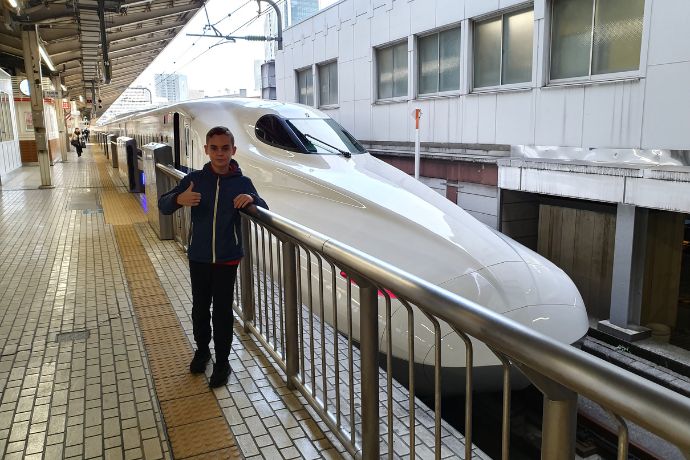
- Short-Term Visits – For trips that only last a short time, especially in major cities, renting a car is probably only worth the cost or hassle if you have a specific experience in mind.
- Budget-conscious and travelling in a small group – Given the cost (renting, paying tolls, fuel, and parking fees), car rental makes little sense if you’re concerned about your finances and are travelling solo, as a couple or only have a few people in your party. The shinkansen or buses would be a better choice for connected areas.
Requirements to Rent a Car in Japan
To rent a car in Japan, you must meet the minimum driving age, have a valid driver’s licence, and have the correct International Driving Permit (or a valid translation of your driver’s licence). You will also need your passport.
Let’s look more closely at the requirements.
Driving age
The legal minimum driving age in Japan is 18 years. People younger than 18 can not drive in Japan, even if they have a valid driver’s licence from their home country.
There are no upper age restrictions in Japan. Anybody with a valid driver’s licence can rent a car in Japan.
International Driving Permit or Licence Translation
You need a valid driver’s license to drive a car in Japan. Without a license, car rental in Japan is not possible.
However, more than a driver’s licence is needed to rent a car. You also need an International Driving Permit (IDP), or 国外運転免許証関係 in Japanese.
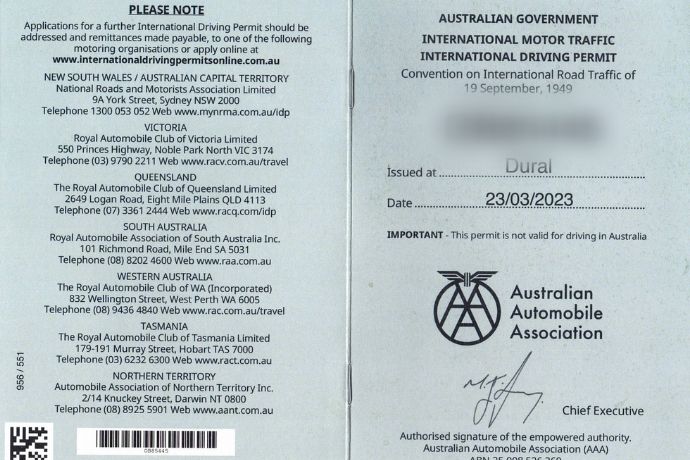
The IDP must be issued under the 1949 Geneva Convention as it is the only type accepted in Japan. International Driving Permits issued under either the 1926 Convention or 1968 Convention won’t be accepted or recognised in Japan.
You need to obtain an International Driving Permit in your home country. You usually get an IDP through your country’s national automobile organisation.
If you have a driver’s licence from Switzerland, Germany, France, Belgium, Taiwan, or Monaco, you must get a Japanese translation of your licence (instead of an IDP). For many people, this is most easily done online through the Japan Automobile Federation. You can only do this once you’re in Japan unless you have someone (a proxy) from Japan who can organise it in advance on your behalf. It takes 1-2 weeks once you’ve put your application in.
You will also need to show your passport at the rental car office. A passport is the only legal means of identification you have in Japan, so you must always carry it.
How to Rent a Car in Japan
The car rental process in Japan is straightforward. An important thing to consider is the need to book in advance during peak periods in popular locations. After that you just need to make a few simple decisions:
- Where and when do you plan to rent the car? Once you have picked the rental location, decide between the rental car companies at that location. A car rental aggregator like Klook, TooCoo!, Discover Cars or RentalCars.com. makes this decision-making easy.
- What kind of car do you plan to rent? Select the model you want. The type of model you want will determine the rental rate. If your chosen vehicle is unavailable during your selected days, choose different days, another car, or a different car rental company.
- Select any extra equipment, such as ETC cards, child seats and snow tires.
- Pay online using a credit card, or defer payment until you pick up the car (most companies have this option).
Let’s look more closely at the different decisions you have to make.
Book in Advance
During peak times in popular locations, car rental offices might run out of the type of car you went. In busy periods, you should book for popular places (such as winter trips to Hokkaido’s snow resorts or summer visits to Okinawa’s beaches) several months ahead.
High-demand models often run out during peak seasons. Transporting vehicles to Hokkaido and Okinawa makes these locations less adaptable regarding vehicle numbers at rental car outlets.
If cars are unavailable in Hokkaido when needed, consider renting in Aomori. If available, you can fly or take the shinkansen to Aomori, rent there, and then ferry to Hokkaido. The ferry journey takes about four hours.
Japan Car Rental Companies
Japan’s leading car rental companies include Toyota Rent-a-Car, Nissan Rentacar, Nippon Rentacar, Times Car Rental, Orix Rentacar, and JR Rent-a-Car. Each has hundreds of outlets across Japan and offers a variety of vehicles ranging from regular cars to large vans and buses.
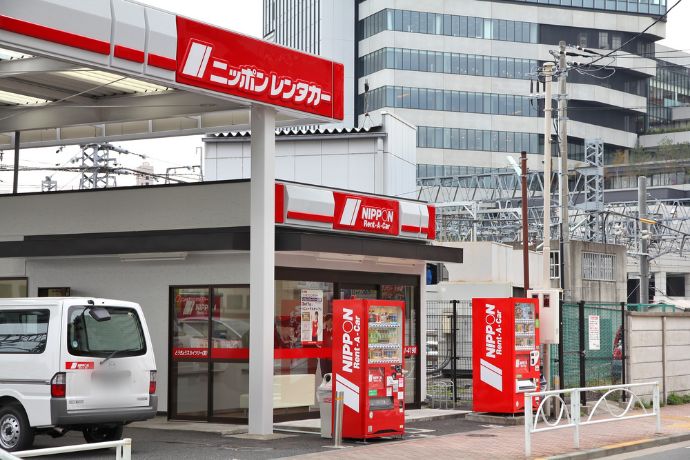
International car rental companies like Budget, Avis, and Hertz also operate in Japan. However, they typically partner with a local Japanese car rental company instead of running their own outlets.
Another great option is to use a comparison booking service like Klook, TooCoo!, Discover Cars or RentalCars.com.. They allow English online bookings for multiple rental companies. They are great for price comparison, have a wide selection of vehicles and offer great convenience.
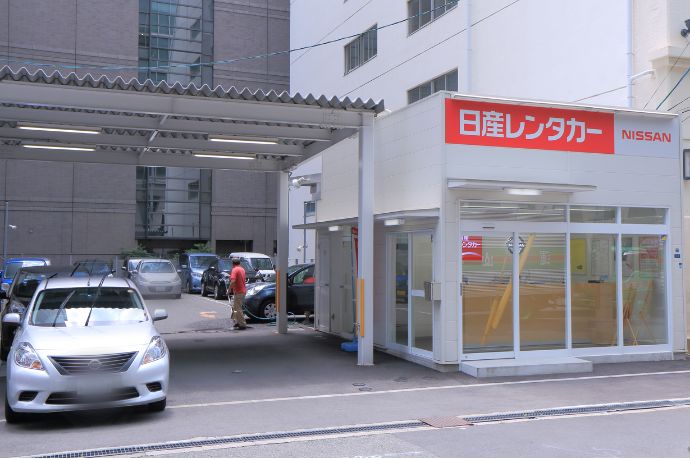
Main Types of Rental Vehicles in Japan
When renting a car in Japan, you’ll come across many different vehicle types from Japanese manufacturers. With an international driving permit, you can drive any car type that a regular Japanese license holder can.
While most rental agencies offer a broad selection of models, from trucks to two-seaters, family cars are the most common.
Most Japanese rental cars are gas-electric hybrids, providing fuel efficiency without compromising engine power. Electric cars are less common in Japan than in other parts of the world. As of 2022, only about 3% of cars sold are electric. They may be harder to rent than hybrid cars.
Choose a car size based on your needs (number of passengers and amount of luggage). A standard sedan or small SUV should be fine for families of four (particularly with younger children). If you have bulky luggage or more than five passengers, a seven-seater such as the Nissan Serena or Honda Stepwgn is an excellent choice.
Car Rental Rates in Japan
Rental fees vary based on vehicle type, duration, and location. A sub-compact car such as a ‘kei’ car (the smallest highway-legal passenger car) will cost about 5,000 yen per 24 hours, up to around 20,000 yen for a van. This price estimate excludes the 10% sales tax.
Car rental companies have regular season and peak season rates. You will pay more to rent a car during peak periods. For example, this usage guide from Nippon Rent-a-Car shows the high-season dates.
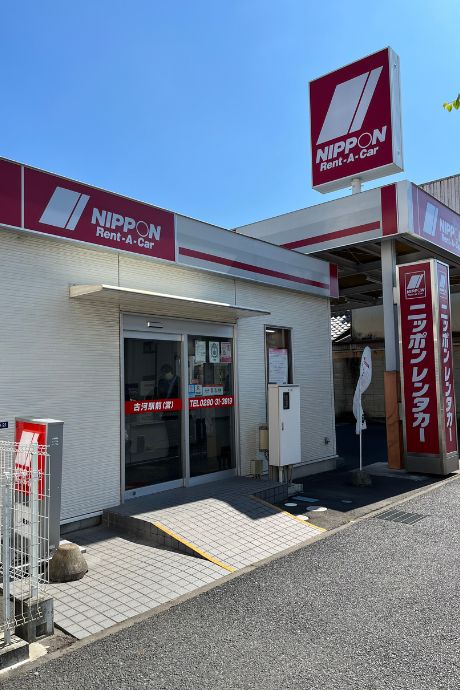
The standard rental fee usually includes basic insurance. You will have an additional cost for collision damage waivers and more comprehensive insurance.
You can extend the rental period and pay the fee for extra hours when returning your rental car. Inform the rental car outlet in advance as increasing the rental period may not always be possible. The rental car company will also charge a penalty if you don’t inform them beforehand.
You should return the rental car with a full tank of gas. If you don’t refuel the vehicle, the rental car company will charge a refuelling fee that may be higher than what you would have paid at a gas station.
Japanese car rental firms expect people to return vehicles to the same location, or a surcharge applies. Some companies waive this fee for returns within 20 km or the same prefecture.
Long-distance returns can be costly. For example, Nippon Rent-a-Car charges 880 yen per 10 kilometres. For an over-the-top example, if you rented a car in Kagoshima at the southern tip of Kyushu and returned it at Wakkanai in Hokkaido, the charge would be 232 320 yen (or just under US$ 1 600. This calculation assumes a distance of 2 631 kilometres driving distance.
Extra Equipment For Your Rental Car
A car navigation system comes standard in most rental vehicles. You can also select a smoke-free car, which is usually free.
The rental car company should also include an ETC device as standard. An ETC (Electronic Toll Collection) system allows drivers to pay Expressway toll fees without stopping at toll gates.
However, you will need to rent an ETC card in addition to the ETC device. Using an ETC card in an ETC device is worth it for the convenience.
Also, consider paying for a regional Expressway pass if they are available for your driving area. The car rental company will know the relevant Expressway pass. Depending on how much toll road driving you will be doing, they could save you a fair bit of money.
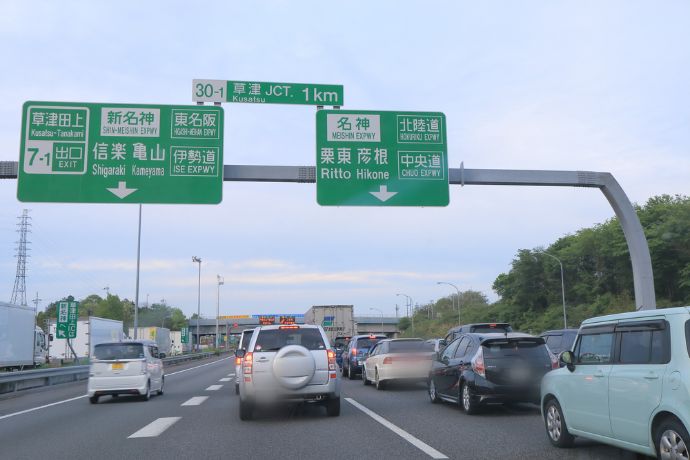
Another optional item that you can rent is a child safety seat. Drivers are required to use child seats for children under six. You can normally order child safety seats from the car rental company in advance. The rental company may provide them at no extra cost. If there is a charge for the child seats it usually is around 1000 yen.
The other situation when you need to pay for extra equipment is in winter. Snow tires are included if you rent a car in Hokkaido or the snow areas like Niigata, Nagano, or Akita. If you rent a car in places like Tokyo, it will not have snow tires. If you plan to drive to a ski resort, order those separately.
Some rental car companies will provide a ski rack as additional equipment (usually only in Hokkaido). Four-wheel drive is another helpful option if you go to the snow country, but it is only really needed in heavy snow.
How To Pay For Your Japan Car Rental
The passport, driver’s license, and IDP are just some of the things you need when planning a car hire in Japan. You also need a credit card to guarantee your deposit and pay for your Japan car rental.
A Visa or Mastercard is readily accepted for car rental in Japan. Diners Club, American Express and Discover are less widely accepted, so check beforehand.
Using debit cards may also be a problem. In principle, Japanese rental car outlets accept Visa or Mastercard debit cards. However, there can occasionally be issues.
For example, banks use the MasterCard or Visa systems to clear transactions in your home country. Sometimes, the network is congested (such as in high tourist seasons) and can’t clear the transactions by debiting the local bank.
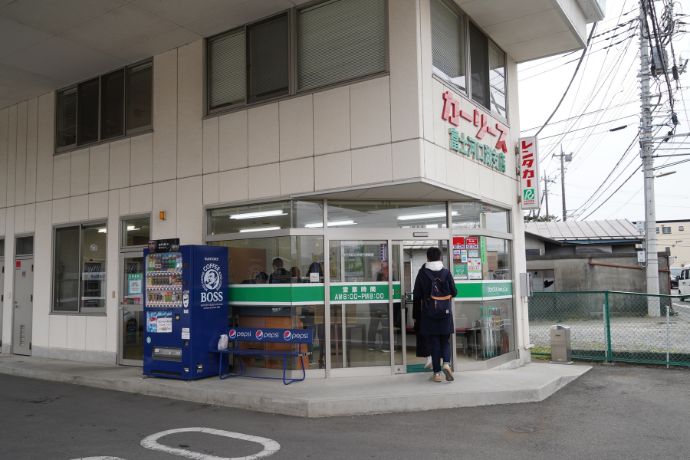
Car Rental Office Locations
Japanese car rental offices are mostly near airports and public transport hubs (like train stations), ensuring easy accessibility for customers.
These offices only require parking for the day’s car rentals since cleaning and maintenance usually happen elsewhere. As a result, they’re often located a short distance from airports and city train stations.
Airports
If you’ve flown into an airport, just like in most other countries, you can get a bus to the rental car company’s office where you have your reservation.
Each rental car company typically has their own bus or minivan, meaning there will be several different buses. Ensure you take the correct one to your selected rental car company. The buses typically run the same hours as the rental car company office is open.
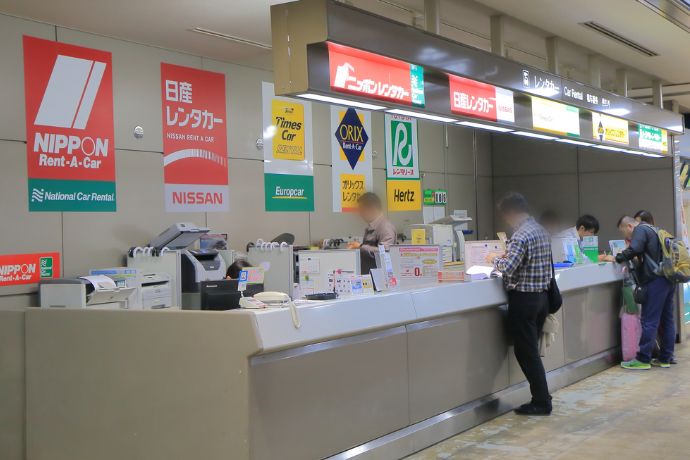
Train Stations
Even in major cities like Tokyo and Osaka, car rental offices are usually within walking distance from train stations. However, they might be located in upper levels of parking garages, making them harder to find.
Check out the company’s website for English directions and allocate 15-20 minutes for the walk from the station, especially if you arrive close to your reservation time.
Getting around with bulky luggage is awkward. For example, you may need to walk with your luggage for 15-20 minutes. Further, if the car rental outlet is on a higher floor of a parking garage building, the elevators can be narrow, and luggage may not fit.
Locating car rental outlets during rainy days can also be painful. It’s much more of a chore in the rain than when the weather is nice.
The solution to both bulky luggage and rain is easy. If you have two or more adults in your group, one person can stay with the bags (and any children) while the other finds the office and rents the car. If doing this, make sure there’s a convenient spot to load the car.
If you’re in a major city, consider renting from locations outside the busier central part of the city. For example, if you’re in Tokyo, travel first to places like Omiya (20-30 minute train ride north-west of Central Tokyo) or Odawara (30-35 minute train ride south-west of Central Tokyo) for easier access and a better driving experience.
What to Expect When Picking Up the Rental Car
Present your reservation and documentation when picking up your rental car at the designated Japanese car hire office. The staff will verify the details and have you sign the necessary paperwork. They will probably take photocopies of documents such as your passport. You then pay by credit card.
There might be occasional challenges, especially with language barriers. Even in major cities or airports, English-speaking staff aren’t guaranteed. However, friendly gestures often bridge communication gaps, given the straightforward nature of the rental process.
Before you leave, make sure you inspect the car. If you find any damage on the vehicle, let a staff member know.
The Pre-Drive Car Check
Before you start driving, it’s important to perform a thorough pre-drive car check, which involves an equipment inspection, understanding your insurance coverage, and familiarizing yourself with the car’s navigation and safety features. This ensures compliance and provides peace of mind.
Equipment Check
Even though Japanese rental car companies are known for their attention to quality, ensure you still do your inspection. Make sure all agreed-upon equipment is present, including checking for the emergency reflector triangle in the trunk.
Insurance and Helpline Support
The rental company will give you insurance documents. All vehicles in Japan must have insurance covering the car, its occupants, and any potential damages. Rental companies often suggest buying additional insurance. It makes sense, as it offers broader protection, even in accidents not caused by you.
When renting a car in Japan, you should also get instructions for reaching the company’s support line along with the keys and contract. The company might have an English helpline if the company caters to English speakers.
You can store documents such as rental contracts, insurance details and helpline information in the glove compartment.
Preparing to Drive Your Rental Car
Your rental car in Japan will have a navigation system that will guide you on the road. Check that the GPS is set to English. In Japan, you’re not allowed to use your phone even as a navigation system.
Make sure you understand the navigation system’s settings, including entering addresses and following its directions. The GPS provides more than just maps. It offers real-time traffic and weather updates every 30 minutes. The navigation system will adjust your route based on these updates.
Many rental cars now come with drive recorders, which can be invaluable in providing evidence after an accident. It’s essential to ensure its functionality. You can do this by pointing to the device and querying the rental representative with a simple, “OK?”
Before driving, adjust the mirrors and check that you understand the instruments or gauges. With someone’s help, test the brake lights and turn signals to ensure proper functionality.
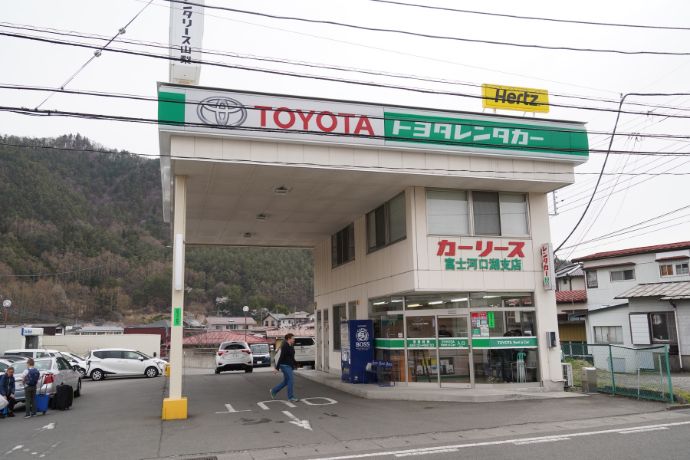
What to Do in an Accident
If you are involved in an accident, move the rental car out of the way of other traffic. Then, provide first aid to any injured people.
After that, contact the police on 110 and report the accident (regardless of fault). If you have more than one person in your car, report the accident immediately.
The next step should be to report the accident to your rental car provider’s helpline. Many rental car providers classify all incidents (regardless of severity or third-party involvement) as accidents.
Follow these procedures for every incident, even if you’re not sure. You may void your insurance if you don’t report, leaving you liable for costs.
Rental Car Return
Fill the tank before returning your rental car in Japan. Refer to our article on Japanese gas stations for guidance. Provide the fuel receipt to the rental outlet when you return the vehicle.
Ensure the car is clean and free from trash. Remove all personal belongings, as getting them back can be tricky, especially if you leave Japan.
Frequently Asked Questions About Japan Car Rentals
From eligibility and documentation to costs and special equipment, this Frequently Asked Questions section provides succinct answers to help you prepare for a smooth rental experience.
- Easy comparison of multiple car rental provider options using ToCoo!
- Use coupon code K49O12 to get your 1,000 yen discount
- ToCoo! is a local Japanese car comparison site that has the most options available
- Clear description of included protection and excess
- Good cancellation options
- Child seats, GPS, electronic toll cards, second driver and more are available as add-ons

You may also like:
Renting a Car In Japan: A Comprehensive Guide for Tourists
Renting a Car in Okinawa: Explore Japan’s Paradise
Driving in Okinawa Guide: Getting Around the Paradise Islands
Driving in Japan with Confidence: Read our Detailed Guide
International Driving Permit for Japan: Your Essential Guide
Japan Traffic Lights Guide: More Than Red, Yellow, and Green
Guide to Japan Road Signs: Navigate with Confidence
Michi no Eki: In-Depth Guide + 11 Top Roadside Stops
Navigating Japanese Highways: A Comprehensive Guide for International Drivers
Join the Japan Travel Planning Facebook Group or Discord Server
You are also welcome to join our Japan Travel Planning Facebook Group and our Japan Travel Planning Discord Server – they are great resources to enable you to ask questions about your upcoming trip to Japan!
Disclaimer: This article contains affiliate links. If you book after clicking on one of these links then we may receive a small commission at no extra cost to you.

